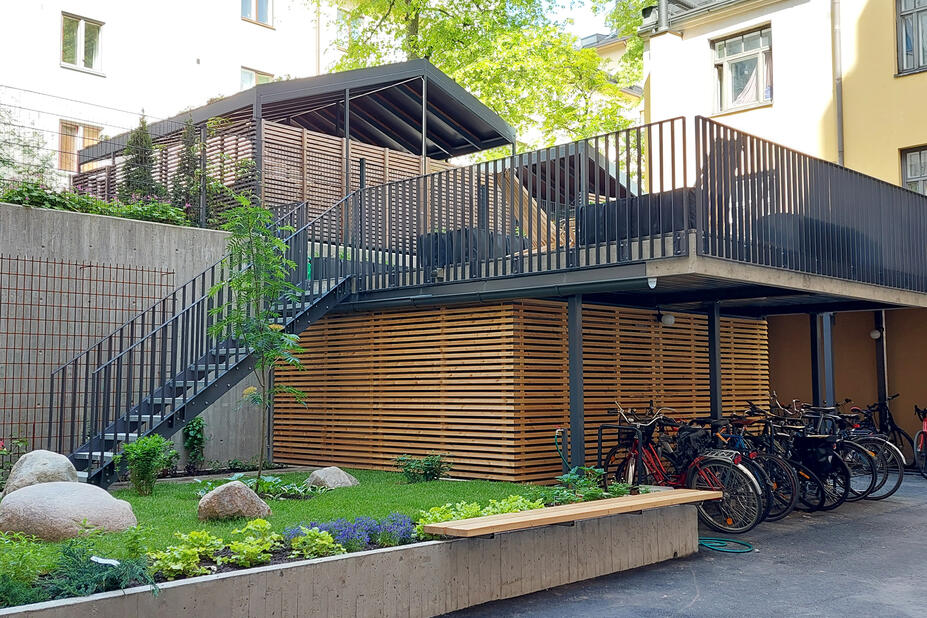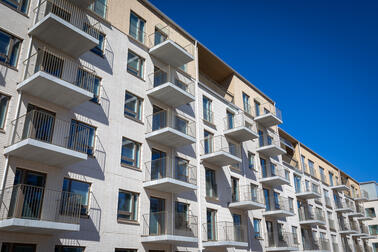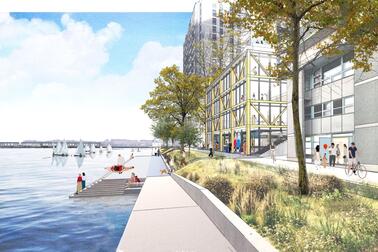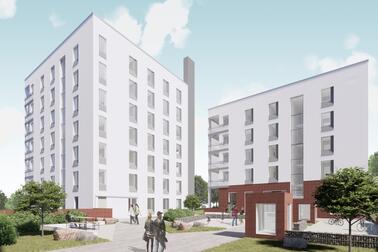The Rakentamisen Ruusu (‘Rose of Construction’) award is awarded annually for an exemplary contribution to the purposes of building control that promotes the creation of good living environments and environmentally, financially, socially and culturally sustainable development.
Instead of giving the award to an individual building, with the 2022 Rakentamisen Ruusu award the City of Helsinki Urban Environment Committee’s Environment and Permits Sub-committee wants to highlight the themes of good housing construction and housing quality.
For a few years now, there has been some strong concern in the media about the quality of housing construction. The winners of the 2022 Rakentamisen Ruusu award show that good housing design and other measures to improve housing quality are still being carried out in Helsinki. With the award, the Sub-committee also wants to encourage those who work in housing construction to take action to improve the quality of housing.
The theme of good housing construction took shape gradually as a result of experiences accumulated in building control services: It is not easy to create a distinct identity for housing stock through standardised processes. The most risk-free approach is to keep building what you are already used to so that projects are successfully completed. At the same time, however, the need for more efficient construction is challenging building regulations in an unprecedented manner.
Grounds for the 2022 Rakentamisen Ruusu award
Asuntoarkkitehtuurin käsikirja by Sanna Meriläinen & Anne Tervo
Asuntoarkkitehtuurin käsikirja (‘The Housing Architecture Handbook’) is a long-awaited, up-to-date guide on housing design. Its predecessor, Asuntoarkkitehtuuri ja -suunnittelu (‘Housing Architecture and Design’) by Esko Kahri and Hannu Pyykönen, was published 38 years ago.
The quality of housing design has been a topic of intense public discussion in recent years, so there is clearly a need for a handbook that promotes good design. The handbook has highlighted examples and the potential of good housing design and thus contributed to public discussion. In addition to this, the publication has already had a positive impact on the quality of housing design.
The handbook is primarily aimed at students, but it also contains topical and useful information for people working in housing design. It is hoped that the handbook and the discussion fueled by it will also increase buyers’ understanding of how the characteristics of residential buildings affect housing.
Rose awards were given to Sanna Meriläinen ja Anne Tervo.

Asunto Oy Helsingin Kommodori, Bahamankatu 4
The bright figure of the Asunto Oy Helsingin Kommodori building is a refreshing departure from the design of Jätkäsaari's closed blocks. The building has been used to study natural conditions and energy efficiency, making it an excellent example of the implementation of Helsinki's City Strategy. The project is part of Helsinki's Re-thinking Urban Housing programme.
In addition to a strong identity, the building was designed with a particular emphasis on the quality of its living spaces. Nearly all of the apartments have windows facing multiple directions, and the daylight conditions of the building’s indoor spaces were examined with the help of simulations, for example. The apartments are characterised by unpretentious materiality and the kind of practical spatial planning required of functional living spaces.
The building was designed by Architect (SAFA) and Professor Kimmo Lylykangas from Arkkitehtuuritoimisto Kimmo Lylykangas Oy.
The building was constructed by Arkta Reponen Oy, which boldly takes on projects with special new characteristics.
Roses were given to Kimmo Lylykangas and Arkta Reponen Oy.

Ajurien talli, Punavuorenkatu 16
Nowadays buildings are being demolished at an increasing frequency. Often the justification for demolishing a building is that it is no longer suitable for its original purpose and converting it to serve some other purpose would be too demanding and expensive. The fact is, however, that buildings generate their largest carbon spike in the construction phase, which means that utilising existing buildings for new purposes is essential if Helsinki’s carbon neutrality objectives are to be achieved. In addition to this, existing buildings also play a role in the preservation of a city’s history and uniqueness.
Ajurien talli is a protected old horse stable that has been converted into a residential building, serving as an excellent example of the innovative repurposing of a valuable building. Housing is the most demanding purpose that a building can have, and in fact Ajurien talli is also an example of a project that may have initially seemed impossible to realise. However, thanks to its technically and spatially complex solutions, the building now offers an exceptionally distinctive living environment for its residents.
Awards were given to the designers, architects (SAFA) Noona Lappalainen and Pauli Siponen from Avarrus Architects .

Renovation of Asunto Oy Helsinginkatu 23’s courtyard
Yards and courtyards have a significant impact on living comfort. Especially in a densely developed city of stone buildings, the yards and courtyards of residential buildings are often paved and occupied by cars. However, even small courtyards have an impact on the diversity of urban nature, the microclimate and stormwater management.
The solution used in the renovation of Asunto Oy Helsinginkatu 23’s courtyard is exceptional; the hangout area of the courtyard was elevated to the roof of the new waste facility, bringing it closer to the light and nearly level with the courtyard of the neighbouring building. By doing so, the project provided a solution to the typical space problems of the courtyards of Helsinki’s inner city residential buildings, offering residents an entirely new way of utilising the courtyard as an extension of their apartments. Instead of just solving problems, the project provided direct added value to residents. The use of space of the courtyard, the supporting walls, the vegetation and the structures of the waste facility and the bicycle shelter with all their details were designed and implemented in a very high-quality manner.
The rose awards were given to Asunto Oy Helsinginkatu 23 and the designer, Architect (SAFA) Rosemarie Schnitzler from Arkkitehtitoimisto R. Schnitzler.

Main image: a collage of the award winners. Original photographs by: Noora Kosonen, Tuomas Uusheimo, Matti Karjanoja and Hanna-Leena Rissanen.


